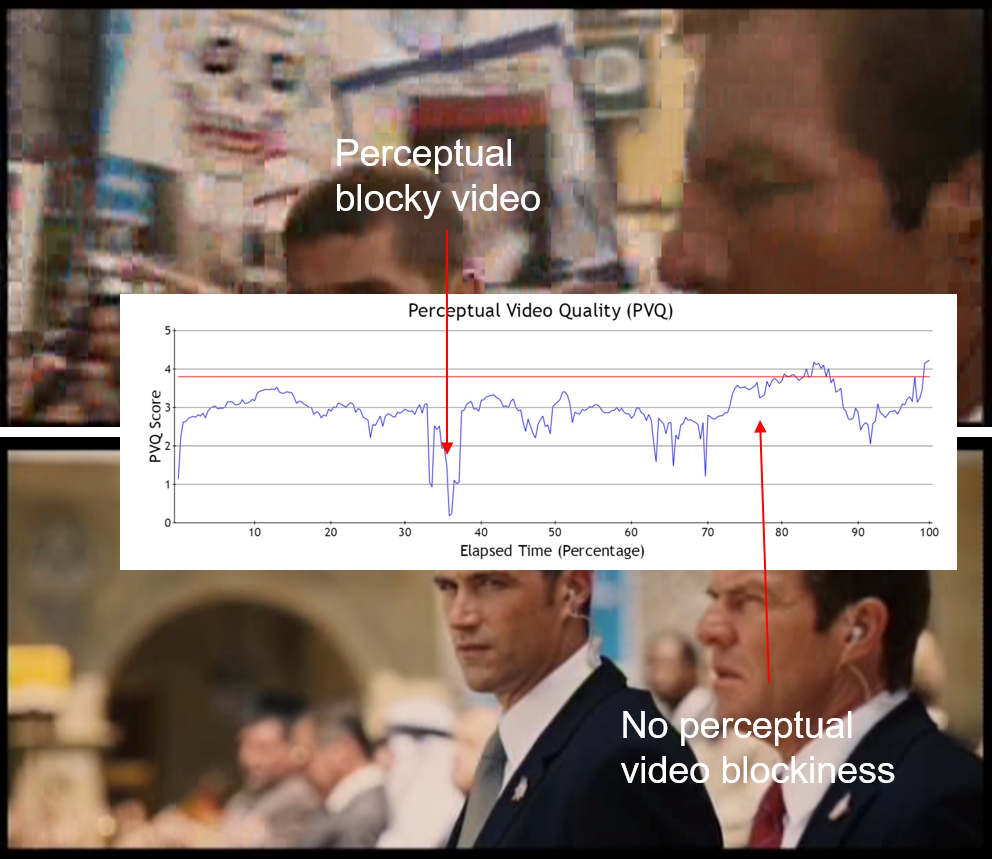

A major problem facing cable operators and broadcasters is the ability to accurately detect artifacts and other quality related problems in file-based content. At issue is the difficulty in knowing when content has issues that can impact the viewing experience.
In the example below, the source material has been transcoded to a lower bit rate for delivery, resulting in visible blockiness in certain scenes. Artifacts from over-compression are particularly noticeable during high motion scenes common in sports programs.

Artifacts from over compression.
To date, automated tools have fallen short of delivering an accurate appraisal of whether a piece of content contained these types of errors. The tools would either deliver too many false positive or miss significant problems.
Enter eMOS/PVQ
Mean Opinion Score (MOS) is a time-proven method of evaluating content and involves compiling data from human viewers about the quality of content – a technique that does not scale in today’s world. Building on the MOS approach, Tektronix first pioneered effective MOS (eMOS) technology, also known at Perceptual Video Quality (PVQ), in its PQA600 Picture Quality Analyzer now used by leading encoding manufacturers worldwide to determine the quality of their compression algorithms.
PVQ or eMOS measurements are like having hundreds of people each looking at different 4K or HD/SD content at the same time and then scoring the content based on the perceptual video quality. PVQ was added to the Sentry family of video network monitors a few years ago, giving cable operators the ability to identify compression artifacts and quality errors in real-time.
Now, for the first time in the industry, PVQ analysis is available for file-based content with the latest release of Tektronix’ Aurora automated file-based QC solution as reported in CED and TV Technology. Just like Sentry, Aurora analyzes video content using a proprietary algorithm designed to detect video compression artifacts affecting the viewer’s quality of experience. Graphical representations of PVQ results make it easy for technicians to quickly check and examine affected content.
To learn more about how Aurora can help you stay on top of file-based content QC and avoid compression artifacts, visit the Aurora resource page here or, better yet, request a hands on demo.


